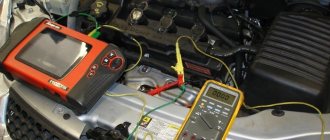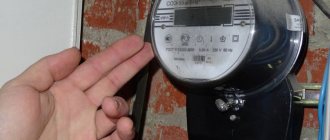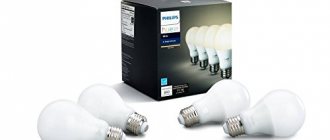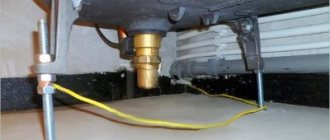A permanently installed electric stove is one of the most powerful household appliances commonly used in normal household conditions. In addition to the hob (burners), it is usually equipped with an oven (oven). Due to improper operation of the oven or for other objective reasons, its components are not insured against breakdowns, including situations when the oven does not work in an electric stove. And since a separate niche in the kitchen equipment market is occupied by electric ovens in gas stoves or stand-alone ovens, which are produced by most well-known manufacturers (DARINA, Beko, Gorenje, etc.), this question is relevant for users of any electric ovens.
Operating principle of electric ovens
The purpose and operation of electric ovens are similar to classic gas ovens. Electrical appliances are also intended for cooking (baking, roasting, grilling). The standard equipment includes baking trays, a tray, racks and guides that ensure safety when removing dishes from the cabinet.
As a rule, electric ovens are equipped with two tubular heating elements (heating elements) - upper and lower (for example, in electric stoves of the Lysva series). This is necessary to achieve the optimal temperature, which helps ensure even cooking. You can use both heating elements or one of them, depending on the baking conditions required by the recipe. However, there are also universal ovens equipped with three or four heaters.
Heating elements are made from high-strength alloy steel, which is associated with harsh operating conditions (high temperature). Also, heavy-duty material is required for the heaters of such ovens, where the “Grill” function is implemented, since they are often subject to regular cleaning with strong chemically active substances used to remove fat and carbon deposits.
The heating element for an electric stove oven is not a unified element that fits all models. Each manufacturer (Indesit, Whirlpool, Electrolux, etc.) develops original heater designs, trying to achieve optimal cooking conditions for various products (heating, circulation and distribution of hot air inside the working volume of the oven). In addition, many well-known manufacturers equip electric ovens with infrared heaters, which are turned on in the “Grill” mode (model Hansa fccw5).
There are a large number of heating elements that differ from each other:
- configuration and overall dimensions;
- power;
- version (single- or double-circuit);
- purpose (grill, top, side, bottom, etc.).
The upper heating elements are especially diverse. The design of the bottom heaters is much simpler. As a rule, they are single-circuit and have a simple configuration.
Main reasons for lack of heating
- Broken oven thermostat. The thermostat regulates the oven temperature automatically. If the oven thermostat is broken, this can be easily determined. You need to turn on the oven, set the temperature you want and wait a little. If the oven does not heat up according to the mode you set, then you can assume that the problem is in the thermostat.
- Control board faulty. Owners of new oven models may consider this option. All modern ovens are controlled using a control board. If the board burns out, the oven does not heat up and may not turn on at all. However, this cause is considered very rare.
- Broken lower element. The lower heating element is used to heat the oven to high temperatures. It is very easy to understand that this is where the problem lies. When the heating element is broken, it does not turn red from high temperature and does not heat up. You can replace a broken lower heating element with a new one in our kitchen appliance service center.
- A breakdown of the upper heating element is completely identical to a malfunction of the lower heating element of the oven.
- The most primitive reason is considered to be a lack of electricity supply to the oven. To do this, you just need to make sure that you turn on the oven.
- Tablet malfunction. The tablet in the oven is a special sensor that protects it from overheating. If the oven overheats, the sensor cuts off the flow of electricity to the oven. It is possible to determine that the cause is in the tablet only with the help of a multimeter. A multimeter is a special device that determines the voltage in electrical devices.
- Breakage of switches and taps. This reason occurs very often, both in electric and gas ovens. When the switches are faulty, they do not transmit a signal to the heating element, therefore the oven does not heat up. The problem can be corrected if you replace the broken switches.
- Broken socket. One of the common reasons why the oven does not work. In order to make sure that the problem is not in the oven components, you need to plug the oven into a different outlet, then you can easily identify the cause of the malfunction.
- Low voltage. If the oven does not warm up or simply does not turn on, you need to make sure that it is supplied with the required amount of electricity (220 volts). You can determine the level of electricity using a special device - a voltmeter.
- Automatic oven shutdown. It often horrifies oven owners, but in fact, automatic oven shutdown is done to protect the equipment. In order to make sure that the oven has not broken down, you need to check whether the electrical network in the house is overloaded (the coffee maker, electric kettle, TV, and other devices powered by electricity are working).
- The power cord is faulty. The problem may be a broken or damaged cord. Before turning on the electric oven, you need to check the power cord; if there is any damage to it (even minor), it is better to refrain from turning on the oven.
- For a gas oven to work properly, you first need to check the gas supply. You need to check whether the valve on the pipe is open.
If all the components, socket, power cord, in your opinion, are working properly, then you can try resetting the programs and control of the oven, and then unplug it and turn it on again.
In order not to encounter such incidents, it is necessary to operate it according to the instructions from the moment you purchase the oven, then you will significantly reduce the risk of breakdown of your device.
If you were unable to solve the problem yourself, the right solution would be to call a specialist.
baked potatoes, apple pie, and the oven refuses to work? Apparently, you will have to do an unscheduled fasting day, consoled by how good it is for your health. It's sad, of course. But we can fix it! In fact, there is a very specific list of what can potentially break in the oven of an electric stove.
If you go through all the points below, you will definitely find the reason for the breakdown of your electric oven. And, if you have at least some experience in repairing electrical appliances, then you can cope with the misfortune yourself. So, what can break in an electric oven?
Typical electric oven faults
The electric stove oven has a fairly simple design. In this regard, the list of malfunctions encountered during its operation is small, and they manifest themselves with the following symptoms:
- the oven does not turn on, the backlight and indicators do not work;
- the backlight and indicators turn on, but the heating is insufficient;
- the oven does not heat up, although the indicators and lights work;
- spontaneous shutdown of heaters.
The occurrence of malfunctions can be caused by various reasons, but most often they are caused by unfavorable operating conditions of the electric oven (high temperature, contamination of working surfaces during cooking, high current, etc.), which contributes to wear and failure of switching devices, drying out and damage insulation of electrical wires and other damage. The presence of certain symptoms helps to identify the malfunction and eliminate its cause as soon as possible.
What may indicate poor performance of a gas oven or its malfunction?
There are several common reasons why a gas oven starts to work poorly or fails altogether.
How can this manifest itself? The most common symptoms of a malfunction are:
- the gas oven does not ignite even when the ignition button is pressed for a long time and frequently;
- after the gas control knob is released, the oven immediately goes out;
- the oven works properly for several minutes and then turns off on its own;
- the oven only works with a very small flame, which cannot be adjusted in any way;
- the flame in a gas oven is too high, which leads to complete combustion of food;
- The gas stove tap does not turn because it is jammed.
gas stove detail
All of the above faults are unlikely to be repairable on your own. In addition, in addition to the skills required for repairs, new spare parts may also be needed. However, before calling a gas stove repairman, check whether all conditions for its operation are met, because the stove may be working properly.
Here's what you should pay attention to:
is the stove connected to the electrical network (especially important if there is an electric ignition); Is there gas in the gas pipe, is the gas supply tap open?
If all the conditions for proper operation of the oven are met, but it still does not turn on or is acting up, then before calling a technician, you can try to start the oven yourself.
Ignition system
Trouble-shooting
A kitchen electric stove equipped with an oven belongs to the category of high-risk household electrical appliances. When working with such devices, you must follow safety regulations to avoid electric shock.
Important! To eliminate the simplest malfunctions that arise during the operation of an electric stove, you must have certain skills in working with tools used in electrical installation and plumbing work. When starting to repair the oven, you must disconnect it from the supply voltage.
Oven won't turn on
If, when turned on, the electric oven does not show signs of life (the backlight and indicators also do not work), troubleshooting begins by checking the power outlet. An electric stove, and therefore an oven, can be connected to both a single-phase and a three-phase network, depending on the model.
If there is a three-phase network, the voltage is measured between each phase and the working neutral wire (~220 V), as well as between all phases (~380 V). If the electric stove is connected to a single-phase network, then the measured voltage between the phase and the neutral wire should be ~220V.
After making sure that there is voltage in the power outlet, similar measurements are carried out at the input terminal block of the electric stove. To do this, connect the power cord to an outlet. If there is no voltage at the input terminals, the cause of the malfunction is the power cord, which must be replaced. Next, visually inspect the condition of the terminals and contact connections. Electrical wires are connected using contact connectors, to which they are attached by crimping (crimping). The connectors must be firmly attached to the terminals. If there is play, the contact is broken, the surface of the parts oxidizes, and the connection ultimately disappears. Once defects are found, they are eliminated.
Advice! When restoring contacts and replacing wires, it is prohibited to use soldering or insulate the joints with electrical tape. Under the influence of high temperature, such compounds are quickly destroyed.
The oven does not heat up when the backlit indicators are on
In cases where the oven lighting and all indicators are functioning, and the cabinet itself has stopped working (heating up), the cause of the malfunction is most often the failure of the heating elements. They are checked using a tester (multimeter) by ringing. If the resistance measured at the heater terminals is in the range from 10 to 100 Ohms, then this indicates their integrity and serviceability. If the tester detects a break or the resistance of the heating element approaches zero (short circuit), then such a heater must be replaced. It is necessary to replace a burnt-out part only with one that is completely similar both in technical characteristics and in design.
Insufficient heating
If during the cooking process it is not possible to achieve the required heating temperature, and the backlit indicators work properly, then this may be due to a faulty:
- fan;
- thermostat;
- mode switch.
In addition, simpler defects are also possible, for example, a door that does not close tightly or a damaged seal. Such malfunctions are detected by external inspection, and can be eliminated quite easily by replacing the seal and/or adjusting the latches (latches) and door stops.
Sealing rubber
The thermostat and mode switch are quite complex electromechanical devices that are most often impossible to repair. You can verify their serviceability by calling the contacts using a tester. If burnt connections are found, they are cleaned to a shine with fine-grained sandpaper. Burnt wires also need to be replaced. When ringing the mode switch, you need to check the electrical diagram. The functionality of the thermostat is checked in the same way. In this case, in a cold state, its contacts must be closed.
A non-working fan must be disassembled and carefully inspected. If bearing failure is detected, the entire device is replaced with a similar one. But sometimes a breakdown can be eliminated by simply lubricating the rubbing parts.
Spontaneous shutdown of heaters
The operation of heating elements installed in the oven of an electric stove (Ariston or other brands) is controlled by a thermostat (thermostat). Structurally it can be:
- mechanical (as in “Dream” electric ovens);
- electromechanical;
- electronic.
If the oven turns off spontaneously while cooking, there can only be one reason for this - failure of the thermostat. Regardless of the type of thermostat, it is replaced with a new identical part.
Diagnostics of oven components (elements)
Formula for calculating the resistance of a working heating element. Mains voltage (for which the heating element is designed) squared and divide the result by the power of the heating element. Example - voltage 230 volts, power 1600 watts. The resistance of this heating element will be 33 Ohms. To put it simply, we can assume that a heating element with a power of 1.5 kW should give a resistance of around 30 Ohms.
The general rule for element resistance is that the higher the element’s power, the lower its resistance.
The cyclic thermostat is also checked for resistance. A working thermostat should make a circuit (be closed) when turned off and open a circuit when turned on (when adding temperature).
Emergency thermostat (overheat protection). In normal condition it should be closed. At high temperatures it should open.
The general rule for checking the resistance of elements is:
- The mains power must be turned off.
- Before checking the resistance of an element, you need to remove one of the wires that is connected to it. To exclude the influence of other elements of the system.
Prevention
Long-term, trouble-free operation of an electric oven is only possible if you comply with the requirements set out in the product operating instructions and carefully care for it after each cooking. In this case, it is recommended to wash the oven chamber with warm water with the addition of a small amount of dishwashing liquid. After finishing the oven treatment, the internal surfaces must be wiped dry.
Important! When cleaning the glass surfaces of an electric oven, the use of cleaning agents containing abrasive additives is not allowed.
Heating element burnt out
One of the most common causes of a poorly heating oven is a burnt out or damaged heating element: upper or lower heating element. You can check them visually: a working heating element should not have any dark spots, swelling, cracks or other mechanical damage; after turning on the oven, the heating element becomes red-hot. For more accurate diagnostics, the heating element must be “ringed” with a special device. A burnt heating element will have to be replaced. By the way, in modern stoves one burnt-out heating element can block the entire electric stove from turning on.
A little about heating elements
A heating element in an electric stove or electric oven is a metal tube with a wire in it. The wire is made from a material that has high resistivity.
Important! If you try to disassemble such an element, you will see that in addition to the “core”, there is also a special substance - magnesium. It plays the role of an insulator, that is, it is designed to ensure that the wire and the sheath do not touch.
What types of heating elements are there?
Ovens use the same type of heating elements as burners. They are:
- spiral:
- solid;
- halogen.
What is the difference:
- A spiral heating element consists of a single or double spiral, and in order to adjust the heating, you just need to turn the knob. The switch provides smooth adjustment.
Important! Spiral heaters are used in ceramic burners. The spiral is located in a special channel made of mica or soft ceramics. It should provide the largest possible heating area. These burners are installed under a glass-ceramic hob. These models use switches that provide smooth adjustment.
- For a solid burner, the heating elements are fixed under a metal plate. In this case, the principle of power regulation is somewhat different - the switch, as a rule, has six divisions. It connects groups of elements one by one. The surface of such a burner is a smooth round metal plate.
- The burners of a halogen stove are made of transparent fireproof glass. Lamps with reflectors are located under them; they heat individual areas. Heating can be adjusted in much the same way as with a solid one. A smoother adjustment is provided by the now popular circuit based on triacs - symmetrical triode theristors.
Control board
The programmer board is an important part of a modern “smart” stove. She controls the cooking process. Like any computer device, such a board sometimes malfunctions. As a result, the oven does not work at all or does not bake your household’s favorite buns well.
Important! Such a board is a delicate device; even voltage surges can destroy it. Therefore, if there was a power failure, and after that the stove suddenly began to act up, the first thing to do is pay attention to the circuit board.
Unfortunately, this device is still not quite a computer - you won’t be able to reboot it, you will have to replace it. The problem arises from voltage surges or if the plate (aka electronic module) is connected incorrectly.
It hardly makes sense to disassemble the electronic module. There are two ways to get out of the situation:
- replacing the module;
- having repaired it.
Important! Unfortunately, replacement is a rather expensive procedure. The cost of the module is sometimes three quarters of the cost of the slab. Repairs will cost significantly less. Repair is usually accompanied by preventative measures that can prevent similar troubles in the future.
Repairs are carried out in the following sequence:
- The hob is removed from the countertop.
- It is disassembled and the module should become accessible.
- The specialist conducts a full diagnosis of each element.
- The broken element is replaced.
- The hob is restored to its original form and mounted in its place.
- All elements are tested
Important! After the repair, do not forget to take the warranty card.











